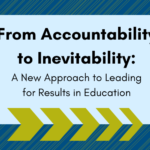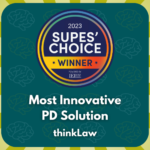Pressing Pause and Identifying Gut Reactions
3 Reasons It's a Powerful Strategy for Your Students and Your Staff
During our time in education, we’ve all received that email. The email where you can predict the content of the body just from the sender’s name and subject line. The kind of email you do not even want to open. These emails usually pop up at the worst time: a notification on your phone right when you sit down for dinner or when you want to go to bed. How do you respond? When do you respond?
In our article, “Teachers Never Have Enough Time”, we explain the power of students Pressing Pause during instruction. But the reality is that the same thinkLaw strategies educators use in their classroom are also powerful for the adults to practice.
What does it mean to Press Pause?
Pressing pause is an intentional moment during a lesson where the instructor presents the class with a very brief headline, paragraph, or picture. Thinkers are asked to pause and do the following:
Share Gut Reactions. Everyone experiences gut reactions to new information. Judges, juries, and even lawyers have gut reactions. Gut reactions are normal. Mature critical thinkers recognize their gut reactions. Explicitly asking thinkers to identify and name their gut reactions helps thinkers to develop the habit of pressing pause and to consider what they need in order to turn their gut reaction into an informed opinion.
Start Asking Questions. We want our students (and our social media friends) to make the move from a gut reaction to an informed opinion. The second step after identifying a gut reaction is asking questions. What don’t thinkers know? What do they want to know? Why is that information important? Who knows the answers to these questions? Why are those experts trustworthy?
How Does this Strategy Help the Adults?
Pressing pause is a critical thinking strategy that is important for everyone. Imagine our opening scenario but with a press pause strategy in place:
Consider Your Gut Reactions. Recognizing how that email makes you feel is a powerful first step before responding. Do I feel nervous? Do I feel personally attacked? If I do not take the time to recognize my initial response before I respond, I may reply emotionally rather than thoughtfully.
Start Asking Questions. Anytime a conflict exists, there is an issue and an interest. The issue might, on the surface, be a parent upset about a change in the lunch schedule. But there is always an underlying interest. Why are they upset about the lunch schedule? The answer to that question may be more complicated. The sender might be worried their child will not get enough time to eat. Maybe their child feels sick if they eat too fast. Maybe their child is anxious and no longer has lunch with friends. How would you feel if this were your child? How would you want the school to respond to you?
The same quick strategy you teach in your classroom can help you approach your professional practice with a critical thinking lens.
Three Reasons to Start Pressing Pause Today (With Staff and Students)
- To truly create a critical thinking revolution, everyone needs to be thinking critically. Feeling rushed is a danger to both instructional time and professional interactions. If adults and students are actively incorporating this quick strategy into their daily lives the culture of a building will shift. Imagine how many issues could be avoided if everyone pressed pause when they recognized a gut reaction! (Do not forget about involving parents in this process! Share this article with your families about how they can press pause at home.)
- Remember the phrase, “Do what I say and not what I do?” We want to flip that narrative. How powerful would it be for students to see the adults at the front of the room teaching AND practicing the press pause strategy? We need our students to apply their critical thinking skills across all areas, across content, and into their social interactions. When adults model this type of strategy, students can see it work in different real-world contexts.
- It is not “one more thing.” Pressing pause does not require any preparation. It only takes a few moments. The cost versus the benefit makes this strategy worth the time to implement.
If you want to learn more about creating a critical thinking culture with the adults and kids in your building, click below to learn more about thinkLaw professional development opportunities.
Easily advance, enrich and engage your students using thinkLaw. Request a quote now!
LIKE WHAT YOU SEE HERE? DIG DEEPER WITH US BY:
>> Connecting with us on Twitter, Facebook, LinkedIn & Instagram
>> Joining our exclusive Facebook™ Group
>> Getting a copy of Colin Seale’s best-selling book, Thinking Like A Lawyer: A Framework for Teaching Critical Thinking to All Students
>> Ordering Colin Seale’s newest book, Tangible Equity: A Guide for Leveraging Student Identity, Culture, and Power In and Beyond the Classroom
>> Subscribing to our Raising Critical Thinkers program, exclusively for families
>> Requesting a custom quote for your needs








Leave a Reply